Go Time: How a Flood in Colorado Helped Build a Go Bag in Texas
Go Time: How a Flood in Colorado Helped Build a Go Bag in Texas
I’ve always considered myself a prepared individual, whether during an emergency situation or just day-to-day life. I’m the guy with a couple cases of bottled water, canned goods and a change of clothes stored in a closet; ready to weather out the worst of storms. However, after reading a recent article from contributor Jeff Carpenter on his experience during a 2013 flood, I suddenly understood that I wasn’t as ready as I thought I was.
Today, I’ll be discussing how the lessons I learned from that article made me set out to put together a Go Bag that would allow me to be prepared for an emergency where I’d be required to leave my home.
Bugging In
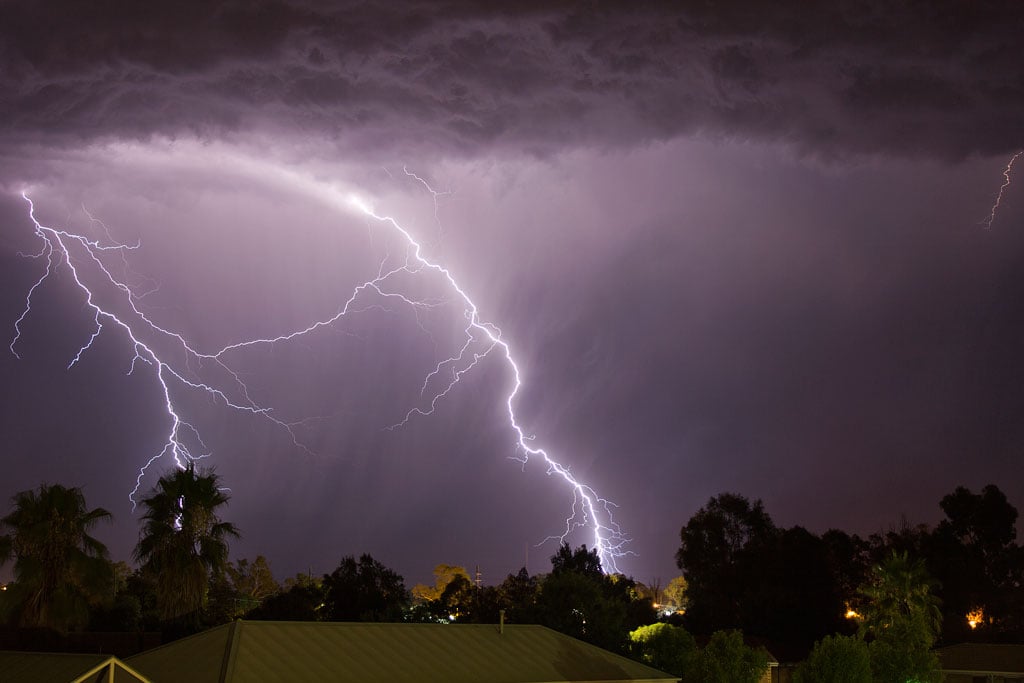
First let me say that I take umbrage with the “bugout-prepper-zombie” culture that seems to have invaded this industry. While I have no issues with people that “prep” for disasters, I feel that many of these people are buying completely unnecessary equipment and preparing for non-realistic disasters. Many will purchase MOPP Suits and gas masks before they’ll consider picking up a trauma kit or attending a medical or firearms training class.
My philosophy has always been that during an emergency, like a powerful storm or power outage, my best option is to stay put and subsist off the food and supplies I have in the house. Even with larger scale emergencies, I’m not planning on strapping on a bug out bag and hiking 40 miles to an underground bunker. The logistics of a trip like that just aren’t realistic to me.
However, with Jeff’s recent article, I realized that I hadn’t really considered the possibility of an emergency forcing me from my home. The idea seems so simple and I felt like an idiot for not realizing that it was a very realistic scenario to plan for. So I set out to create a Go Bag that could be stored in a vehicle and would be ready to go in case I needed to evacuate from my home extremely quickly. (Think 5 minutes.) Bryan and I actually discussed this exact scenario on a recent episode of Gear Tasting Radio.
The Bag
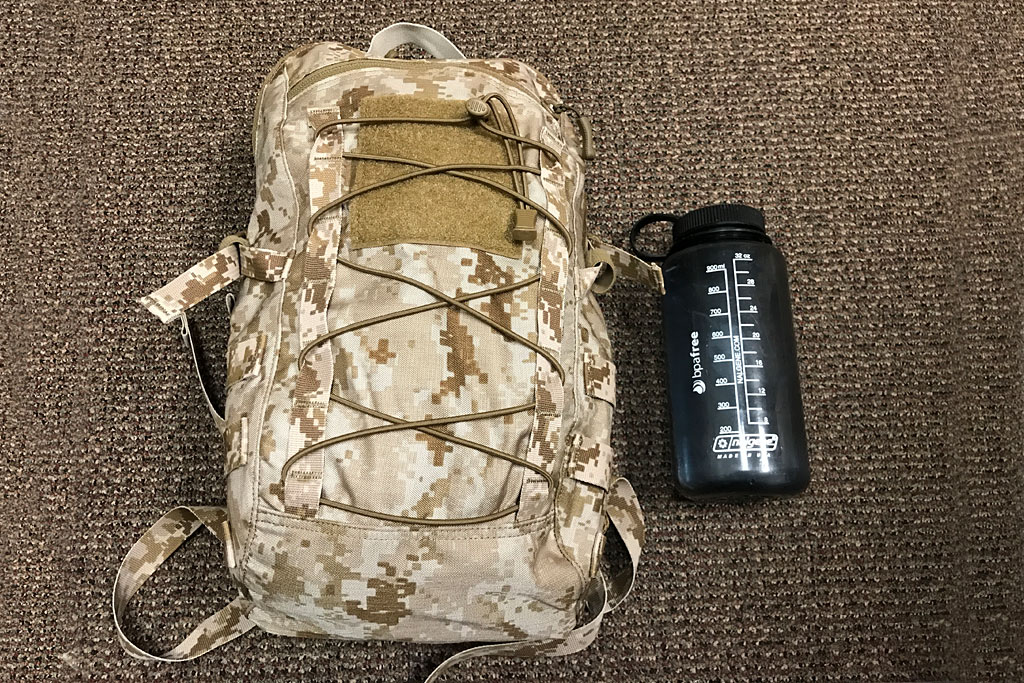
I’m a pack addict; if there’s a will, there’s a pack to put it in. So when building out this new Go Bag, I jumped at the opportunity to pick up a pack I’d had my eye on for awhile. Being a big fan of Mayflower Research & Consulting, (now a part of Velocity Systems) I was well aware of their 24 hour Assault Pack. This pack seemed like the perfect size for what I was looking to store and its small size and light weight made it perfect for vehicle storage and emergency use.
In the past few months, I’ve been going through what my Fiancé has dubbed “A Camo Life Crisis” and I’ve been selling off MultiCam gear in favor of my new favorite pattern, Desert Digital. Lucky for me, Mayflower/Velocity is one of the few manufacturers making gear in this colorway, so picking up the 24 Hour Assault Pack in Desert Digital was a win/win for me.
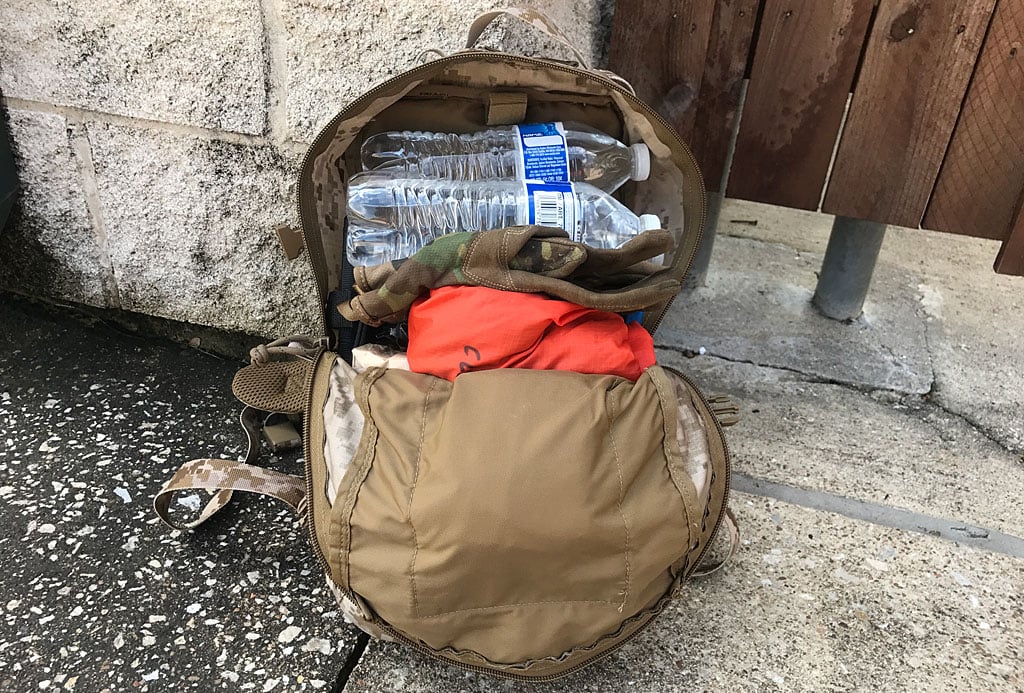
Before I get into the contents of the pack, I want to first mention the quality of the pack itself. Made from 500D CORDURA, this pack is extremely light and features quality zippers and buckles. The shoulder straps are lightly padded, but not heavy or rough and the entire back section and the back of the straps feature a mesh material.
It’s a small pack and there’s no getting around that, so if you’re a “kitchen sink” type person, you might want to consider their 48 Hour Pack. However, I wanted a small “assault-style” pack for this project so I welcomed the diminutive size. I’ve made a few minor modifications to the pack since receiving it, including removing the shock cord and the field of loop on the outside. I didn’t really have a use for either of these and have had branches and other things get snagged on shock cord before.
The Contents
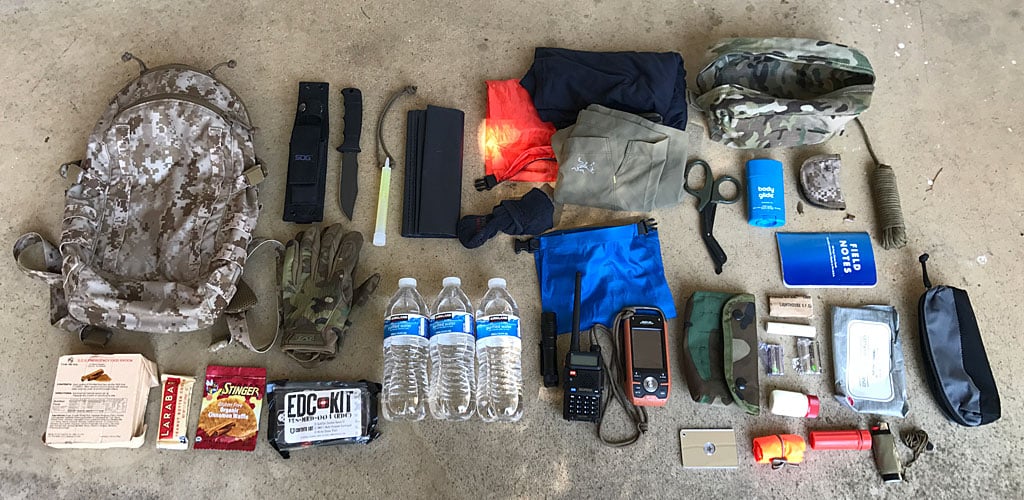
Think of all the things you might need during an emergency away from your home for about 24-48 hours. If you’re like me, your mind immediately started racing with things like food, water and clothing. So this is where I started out when planning out my contents. Food is a big concern, especially if you aren’t able to make it to an emergency shelter or friend’s house.
My usual go to outdoor food is a field stripped MRE, but with all the contents I had in mind I knew I’d have to think differently. This led me to ration blocks, which aren’t something you’ll find in a Zagat’s guide for best tasting. They’re basically oily cookies that provide calories. So while this option isn’t the tastiest, it’s one that offers a great amount of calories (3600 total) in very small package.
Next up was water and many people out there might be surprised to see me rocking three disposable water bottles rather than a hydration bladder or Nalgene bottle. I definitely prefer a good Nalgene bottle, but for this I wanted individual containers of water that I could either pass out or isolate from contamination. If crappy gunk gets into your single source of water, you’re going to have a bad time.
For a change of clothes, I went with lightweight shorts, a wicking t-shirt and some socks. This is definitely bare bones when it comes to clothing, but we also live in Texas where the nights are 80 degrees in the summer, so right now, I’m not too worried about being chilly. As we progress into the winter months, I’ll most likely change out some of these items for warmer counterparts.
Something I want to touch on quickly is that this pack isn’t all I plan to have with me in an emergency. If push came to shove, I could work with just its components, but I definitely don’t plan on that. Those that have read my write up on the Arc’teryx Blade pack know that my EDC Bag has additional supplies like a Mini Survival Kit, EDC Trauma Kit and other helpful emergency items.
When evacuating my home, the EDC Bag is one of three things I’ll be grabbing, the others being clothes to wear and a dry bag containing important life documents and some cash.
The above contents are what I felt like I needed to explain the most and rather than going in-depth on the remaining items, I’ve listed the full contents below, as well as links to the items.
- Mayflower 24 Hour Assault Pack
- S.O.S. Emergency Rations
- Lar a Bar
- Honey Stinger Waffle
- ITS EDC Trauma Kit
- Mechanix Gloves
- SOG Seal Pup Knife
- Chem Light
- Contractor Bag
- Bottled Water (3)
- Under Armour T-Shirt
- Arc’teryx Incendo Shorts
- Socks
- Streamlight Protac 1L-1AA Flashlight
- Baofeng UV5-R Radio
- Magellan Triton 1500 GPS
- Shaving Bag
- Mojo Shears
- Body Glide
- Sewing Kit
- ITS Jute Paracord
- Notebook
- MRE Napkins
- Lip Balm
- AAA and AA Batteries
- Gold Bond Powder
- Wet Wipes
- Signal Mirror
- MPIL
- Waterproof Match Container
- BIC Lighter with 100 MPH Tape wrap
- ITS Photon Micro Light (Red)
Storing the Bag
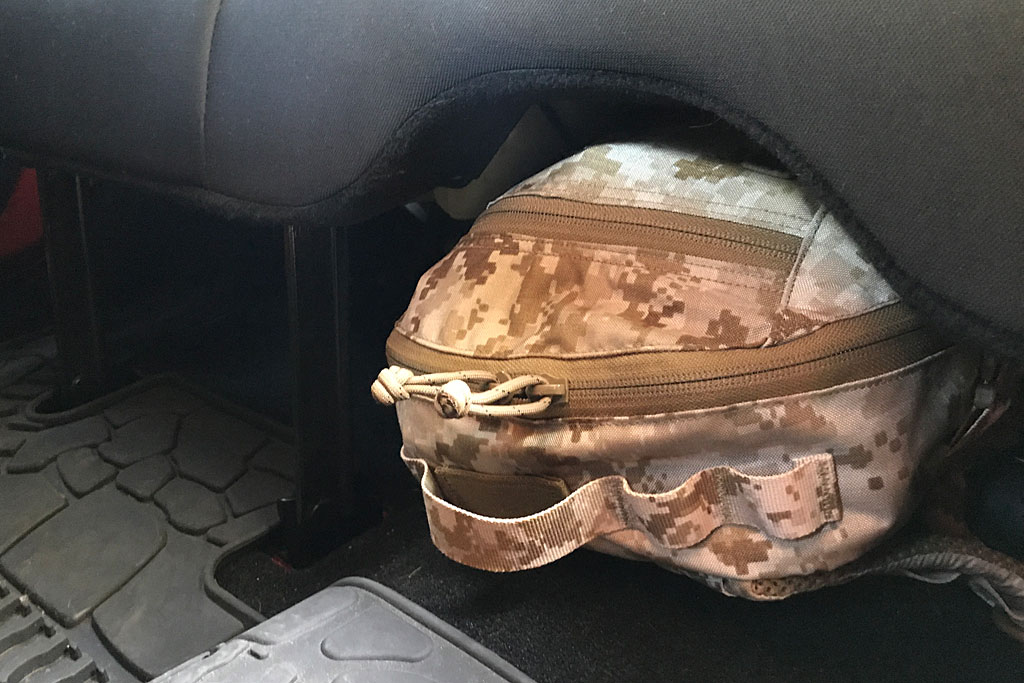
One of my favorite things I discovered when putting this pack together was just how well the pack fit under the back seat in my Jeep Wrangler. The small U-shaped gap under the seat almost seems like it was designed for this pack to fit there.
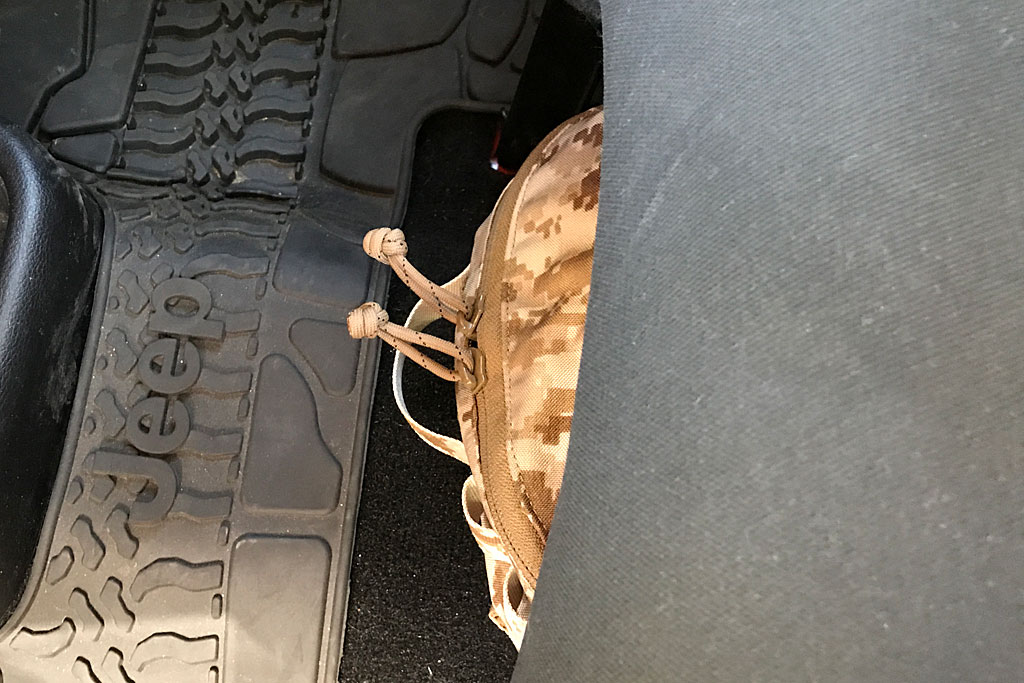
Storing it under the back seat enables it to remain out of sight for the most part and leaves it in the location I’m most likely to head when having to evacuate, my vehicle. During an evacuation in a flood or fire, having a vehicle would be a tremendous asset. If I wasn’t able to take the vehicle for some reason, the pack pulls out from under the seat easily and is ready to go in a couple seconds.
Conclusion
As with most of my gear, this Go Bag is an ever-evolving project. I’m sure items will be added and removed in the pack in the very near future as I learn and discover more information. I’m always on the lookout for good advice, especially when it comes to gear, so be sure to leave your comments and questions below. Without the ITS community, I would have never had the realization that this bag was something to consider creating!






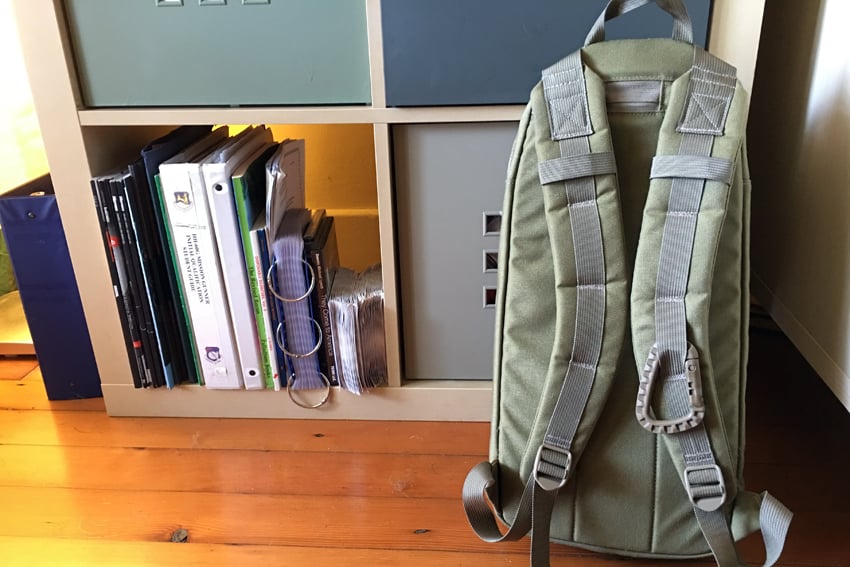
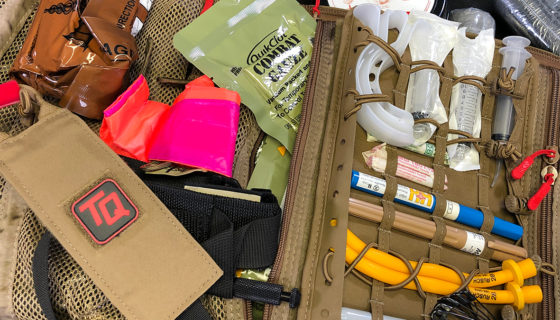
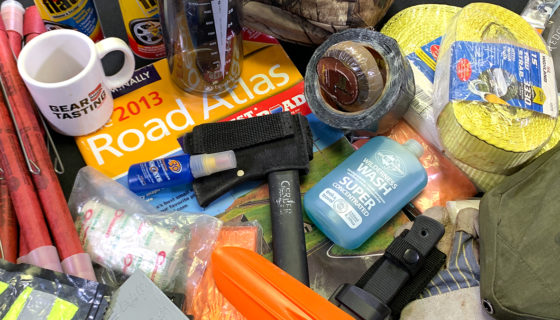
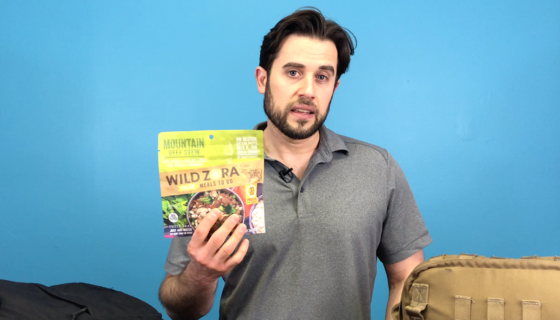

Discussion